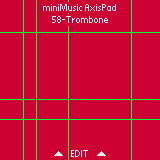If you are new to handhelds completely you probably have an advantage as you may not have bought a device at all as yet. If you have a device already then you know where you stand and can get a clear idea of what is available to you.
There are two main types of device. Those running a Palm operating system, and those running Windows Mobile. There are one or two others which I’ll mention at the end, but only leave out as they don’t have the range of software that is available on the Palm and Windows Mobile platforms.
Essentially your choice of device or platform will govern what is available to you in terms of music software for your PDA.
Palm DevicesIf you go for a Palm device you are in many ways restricted in the types of device that are available. In fact, all you can really by are the devices from Palm. Although you might think that this is limiting (and in some ways it is), there are still a number of good devices available from Palm. The newest are the Treo smartphones, which are very good in their own way. However, you should be careful as a number of the newer ones come in Windows Mobile flavours too. The Palm TX is very good (or so I am told) although the audio is apparently a little hissy. Don’t be tempted by the forthcoming Palm Foleo device. Currently non of music applications that run on the palm operating system will run on the Foleo. If this situation changes then I will write about it on the blog.
If you are interested in buying second hand Palm devices then there are many more opportunities. Possibly the best palm device for making music is the Palm Tungsten T3. This device has a 400mhz processor and 64mb of storage RAM and a 10mb dynamic heap, which is exceptionally useful for loading samples. The T3 is arguably the palm device best suited to music making. However, there are other devices that are very handy too such as the Zire 72 the T5, and the Lifedrive.
One very important thing when choosing a device make sure it runs Palm’s operating system 5 or above. It your device runs anything less than this, you are going to be fairly disappointed in the options available to you in terms of software.
Windows MobileWith Windows Mobile or Pocket PC devices there are far more choices in terms of hardware, as there have been lots and lots of device manufacturers. Because of this it is quite difficult to give you specific advice for each manufacturer or range of devices, so I’m going to stick to some principles and tell you my experience with Windows Mobile.
In general if you are looking for a Windows Mobile device you need to think about three things:
1. Processor speed. I would aim to go over 400mhz, the faster the better.
2. Memory. Again, more is better. You need plenty for storage and for running music applications which are very memory hungry on the whole.
3. Operating system version. Ideally you want either Windows Mobile 5 or Pocket PC 2003, nothing before this is possible.
Ok. Having given you some basic principles. Here’s my experience of the platform.
I first used Pocket PC with an HP Jornada 568 which I bought on eBay. It was a great device. I ran applications like Syntrax and Griff and it performed very well. The Pocket PC OS was ok to use, but it has issues, I guess like all operating systems. In Pocket PC / WM5 apps don’t close, they stay open until you run out of memory, which isn’t too clever. Also the way in which memory is split Is a bit strange.
I’ve recently upgraded my old Jornada to a Dell Axim. This Is another great device and some of my issues with the Pocket PC OS have been dealt with, and others haven’t.
The one great thing about Windows Mobile over Palm is that using the StyleTap emulator you can run palm applications on a Pocket PC. The same is not true the other way around.
Now, at the beginning of this post I said I’d talk about other PDAs which can be used. The two types I wanted to talk about were the Sony Clie devices, and also the Zarus.
Sony discontinued the Clie some time ago, and so these devices can only be bought on ebay. Some of the clies are very nice indeed. There were a number of different ranges, but the later ones ran Palm’s OS5, and some also had a built in Yamaha sound chip allowing them to play MIDI sounds directly.
In terms of the Zarus, I only know of one music application and that is PDa, PureData anywhere. Apart from this I know very little about the platform. At some point (when I've got the money) I will get myself one and find out more about the platform.
Anyway, I hope this has been useful and gives you some help in which type of device to look into. Remember, it is alway worth doing your own research, but if you want to ask any questions, please email me at palm dot sounds at mac dot com.













































